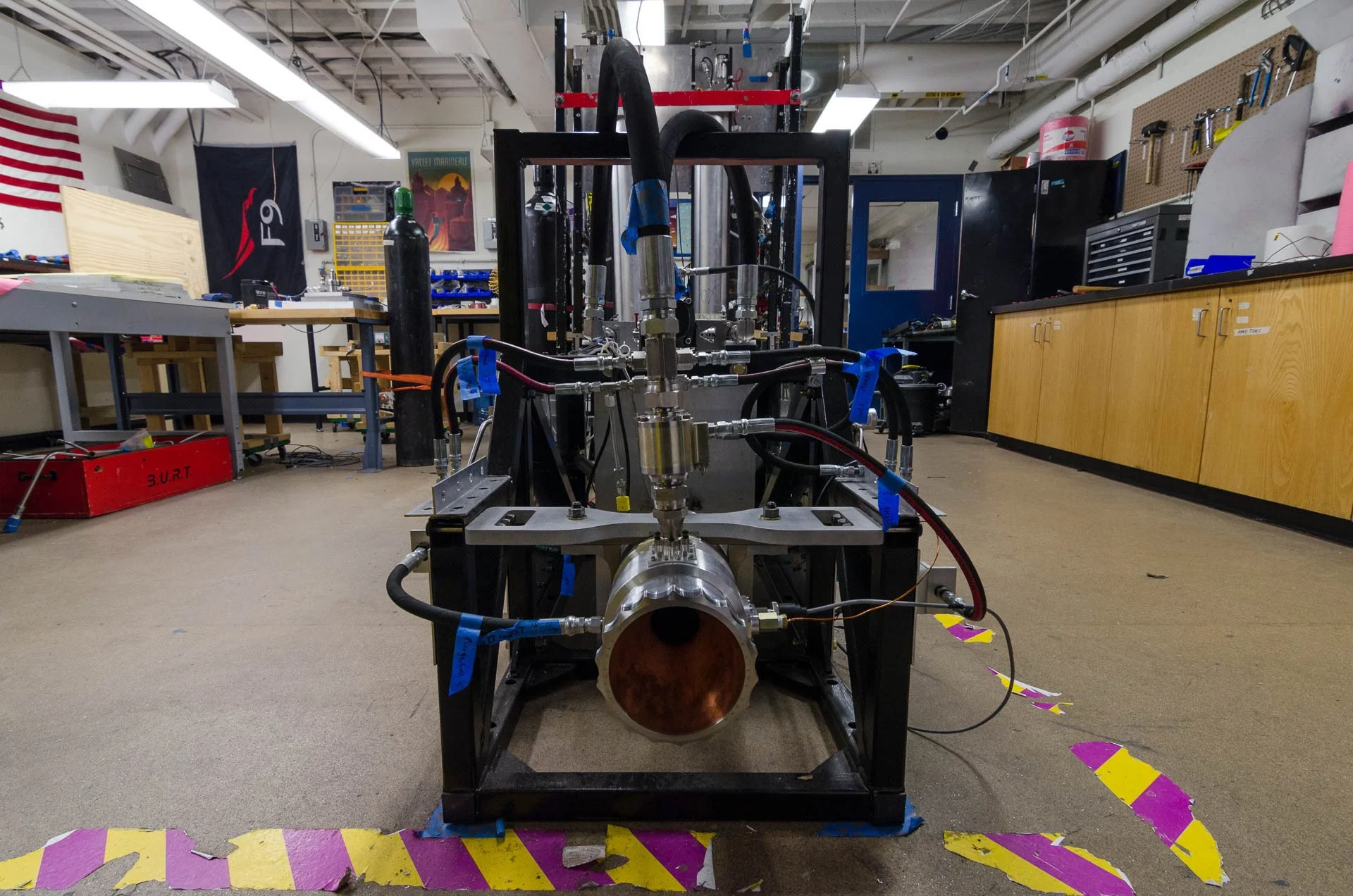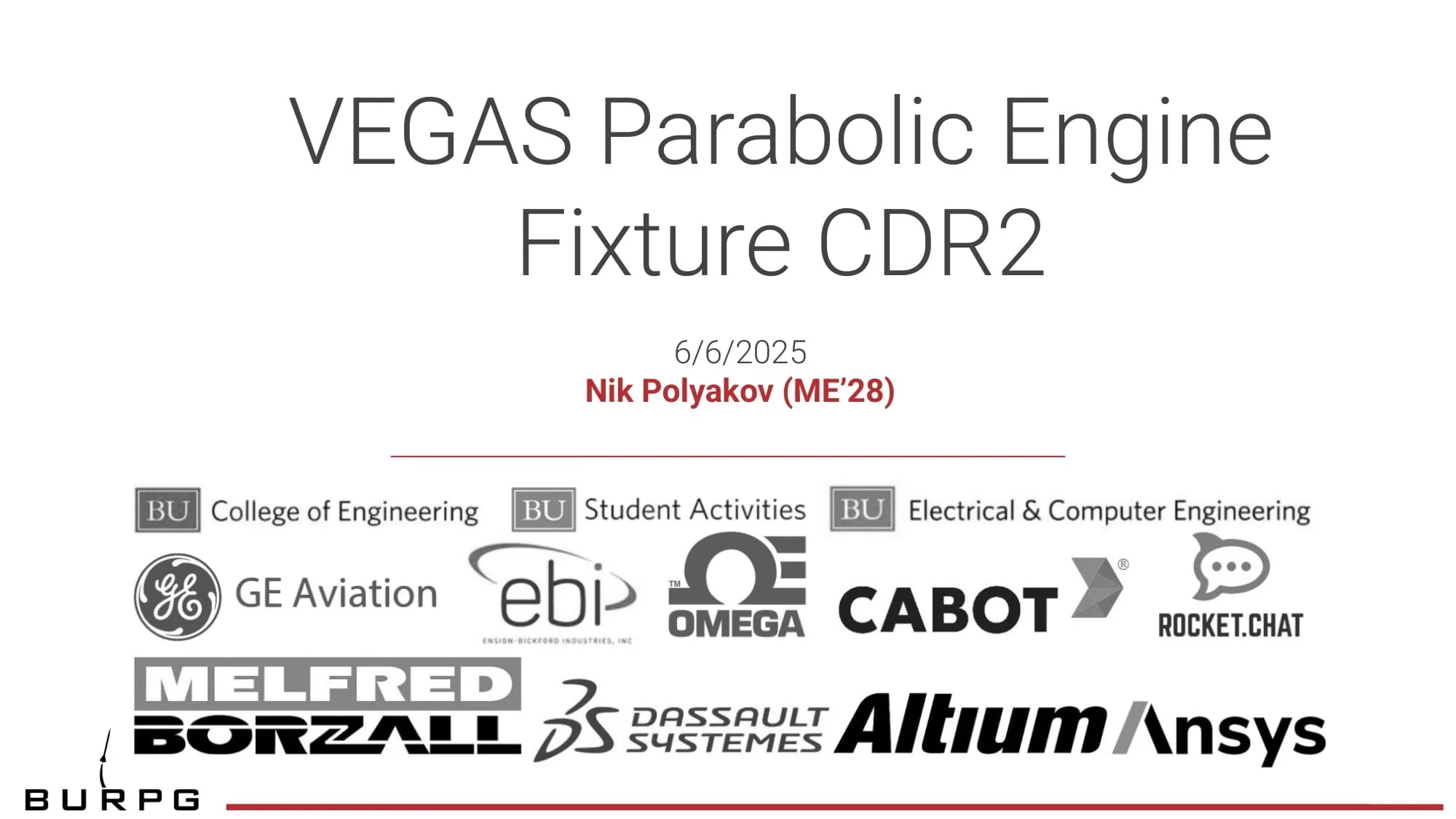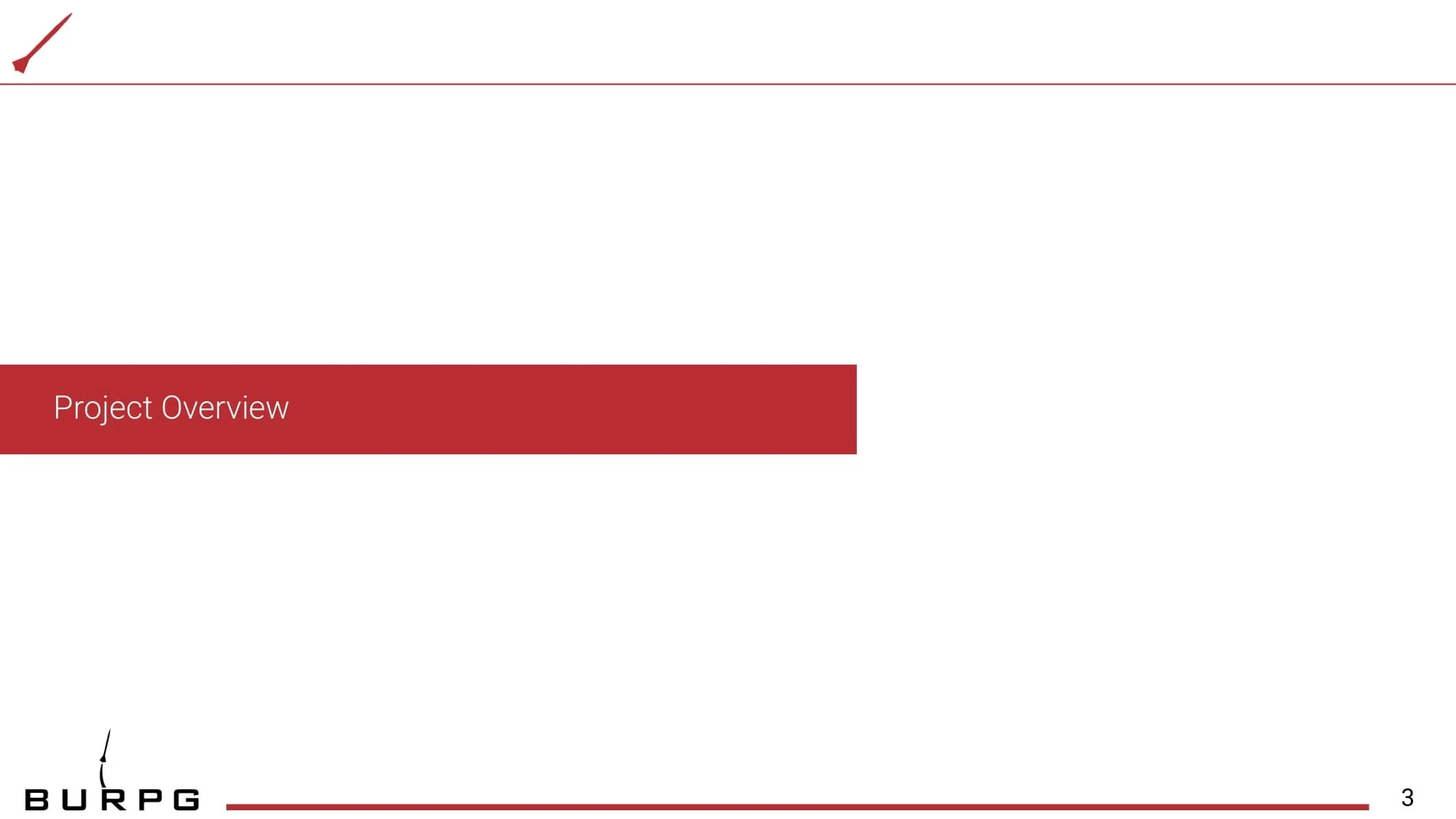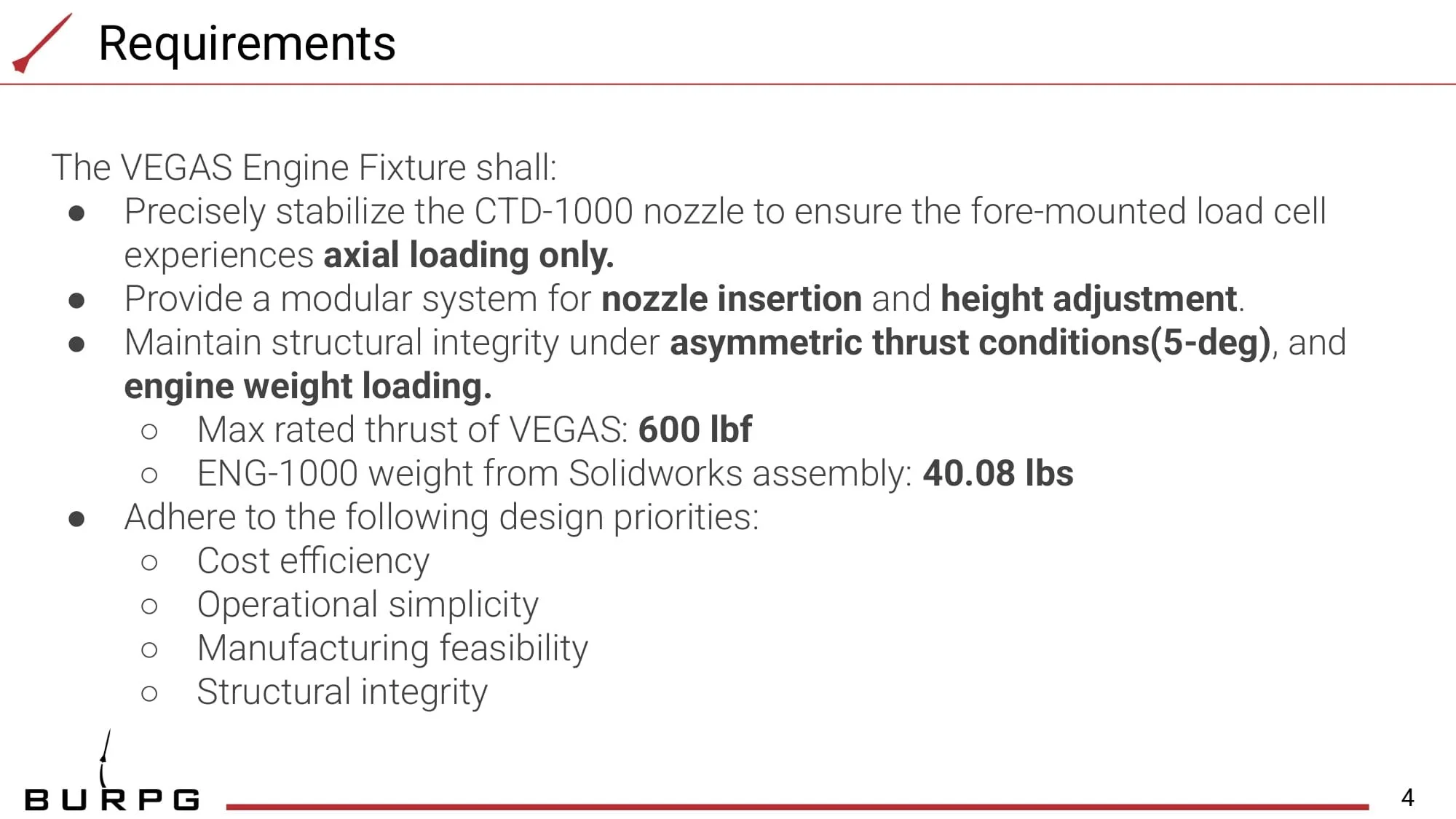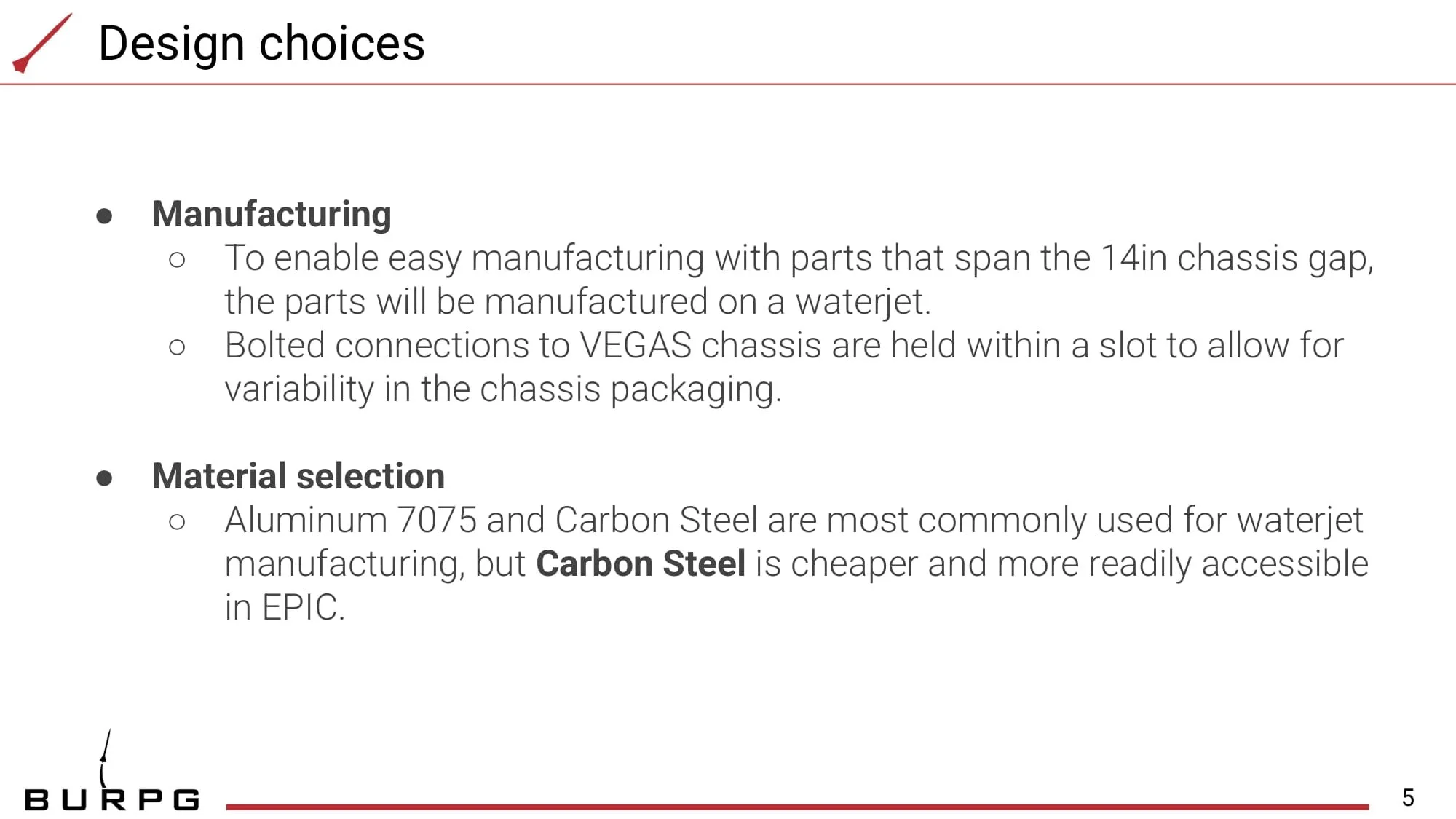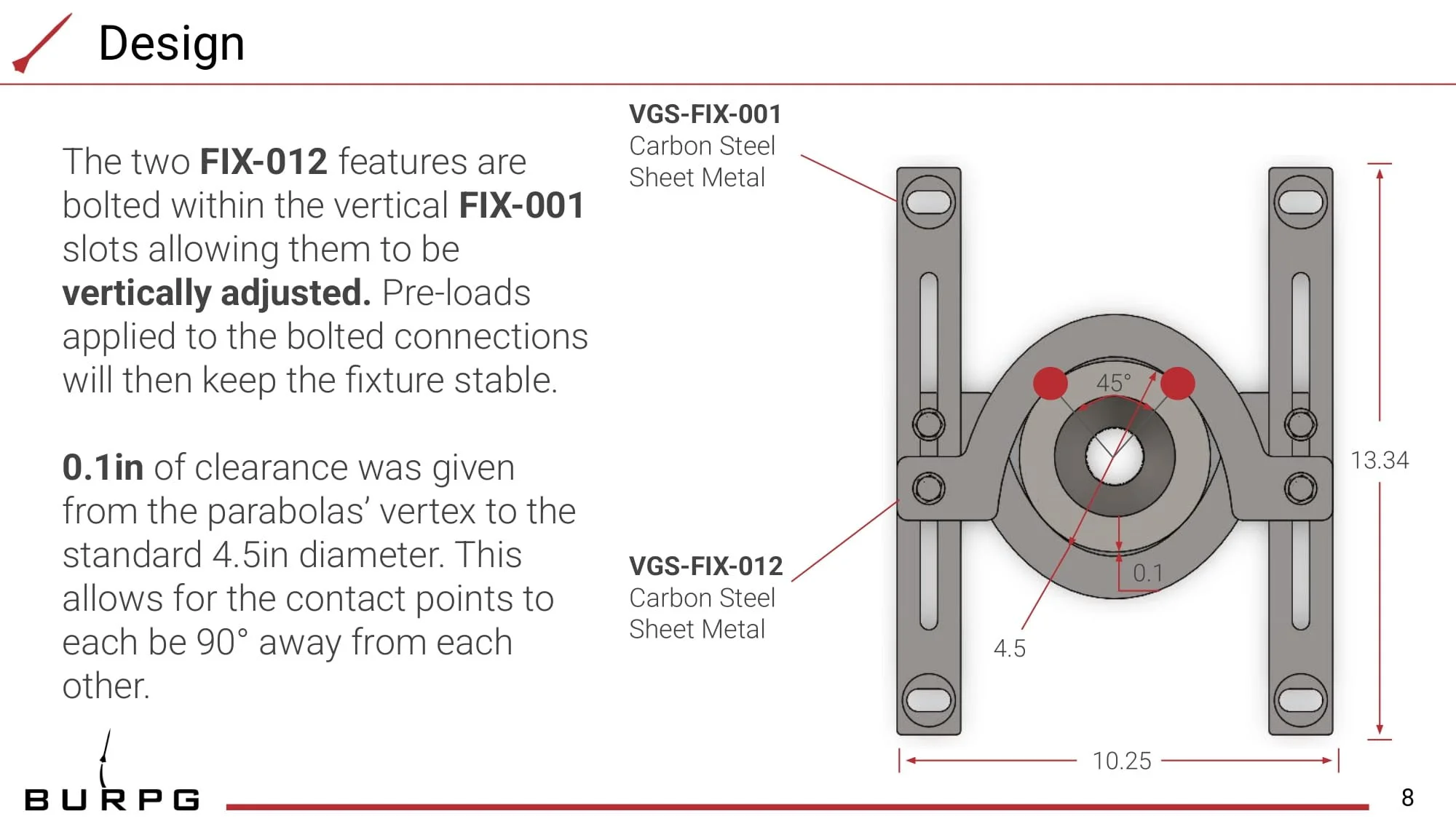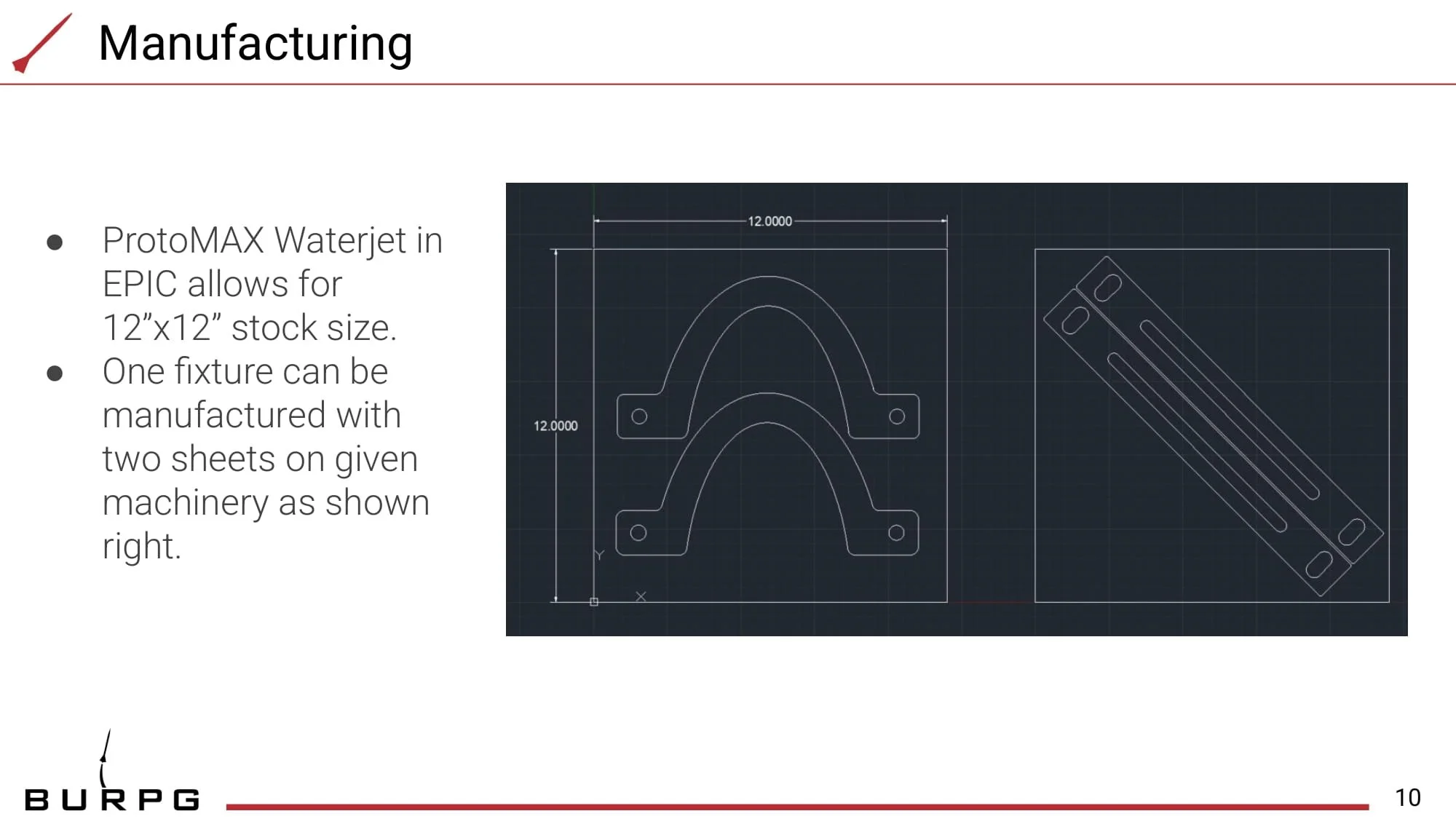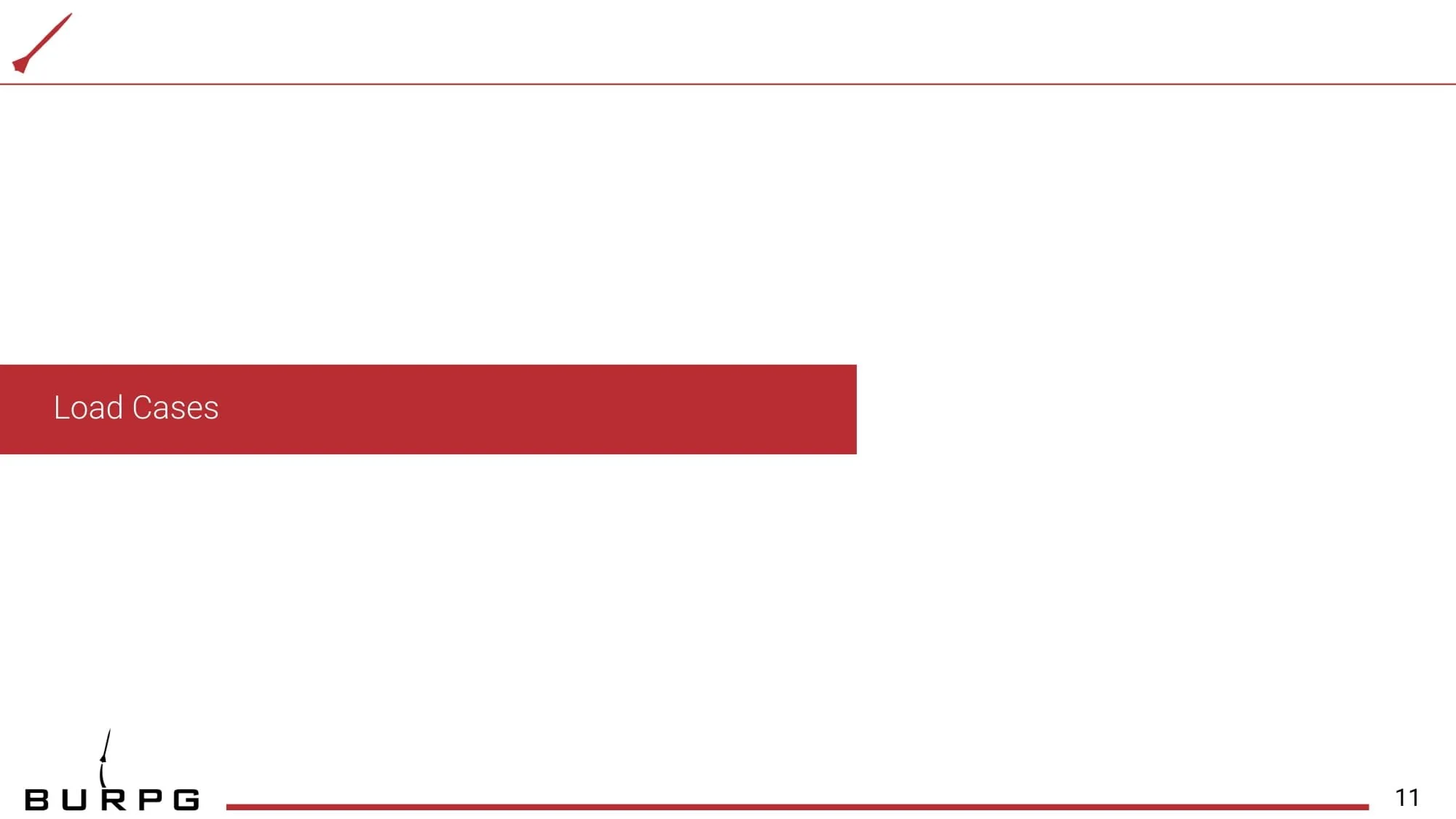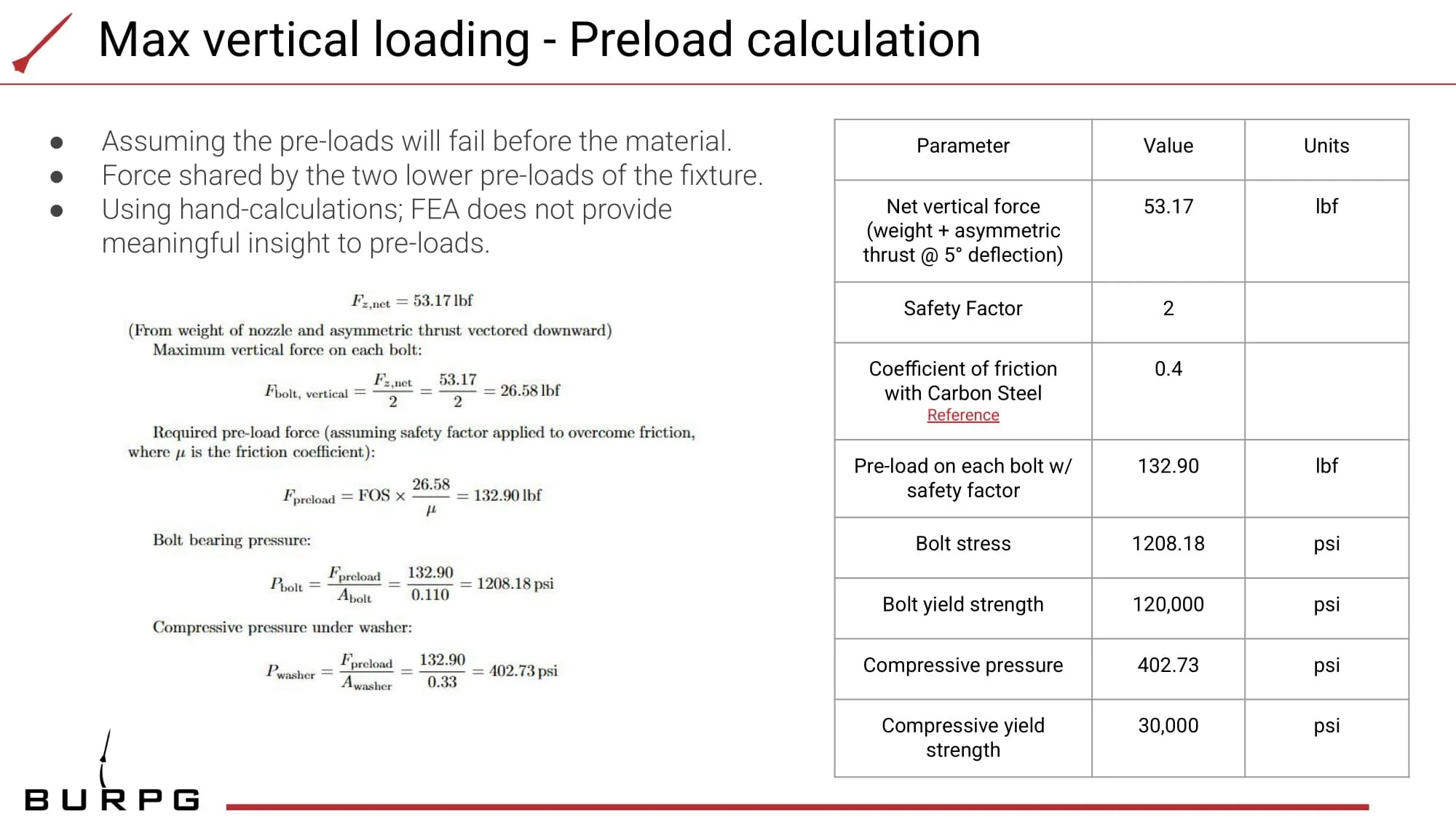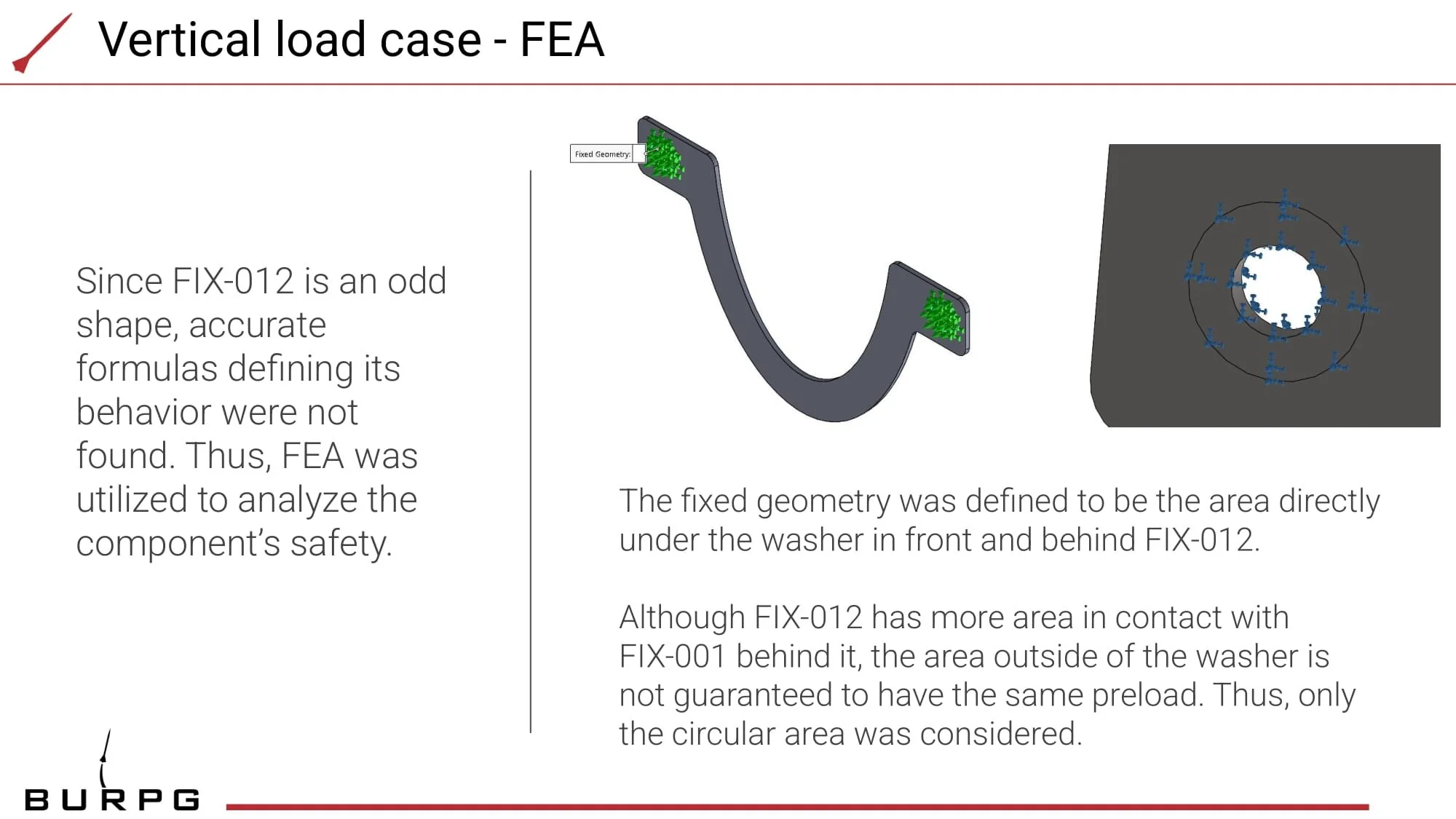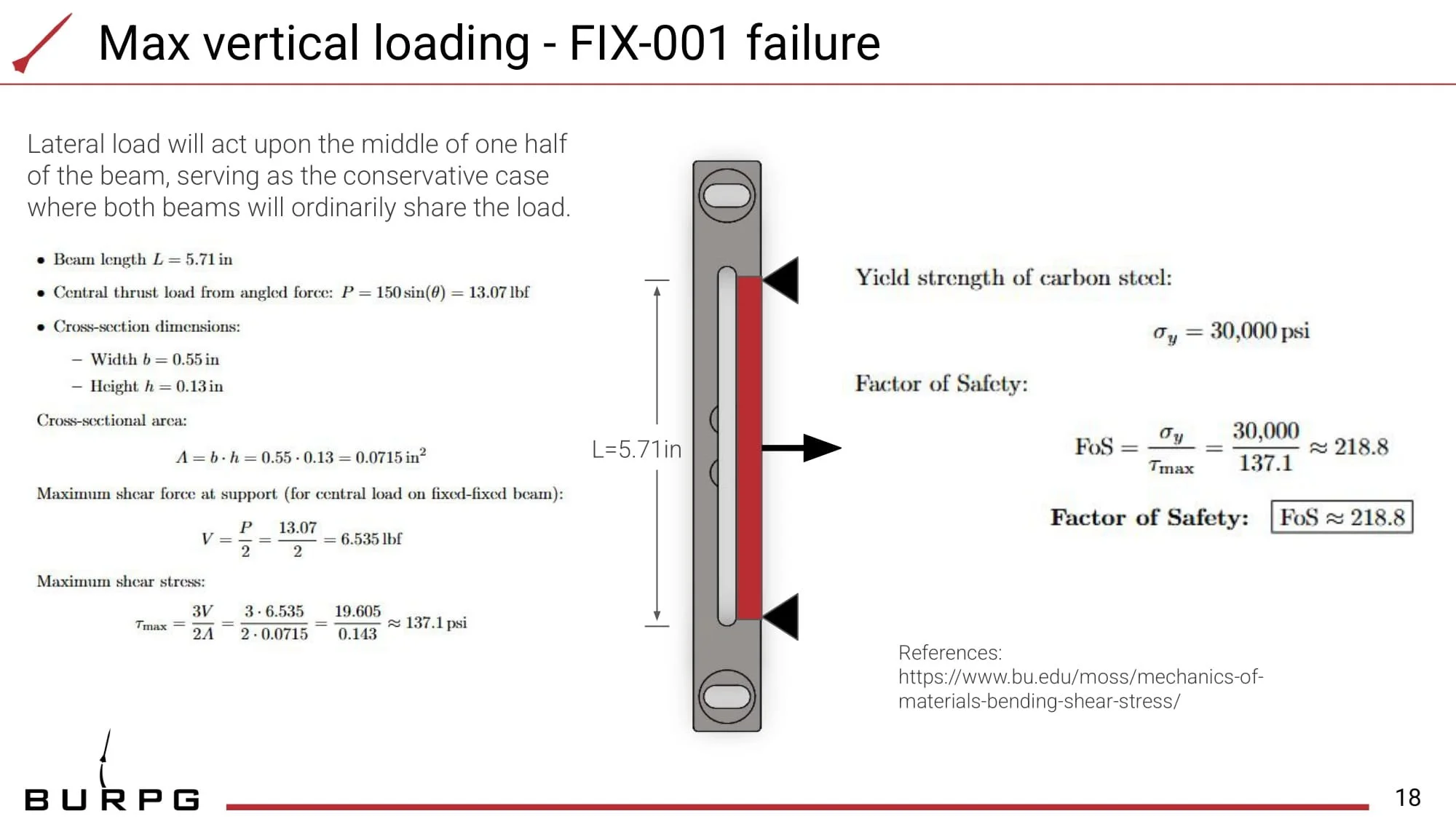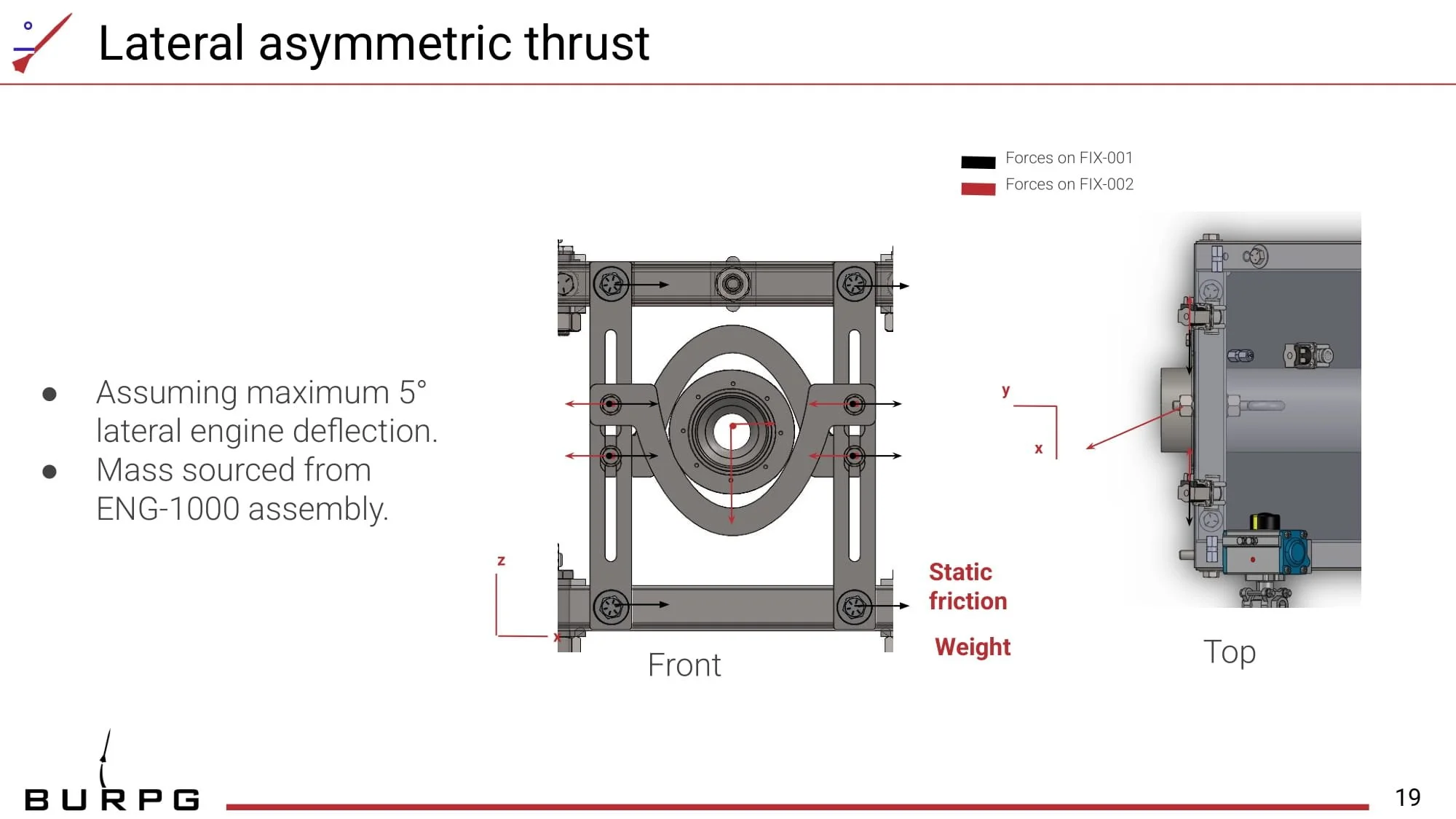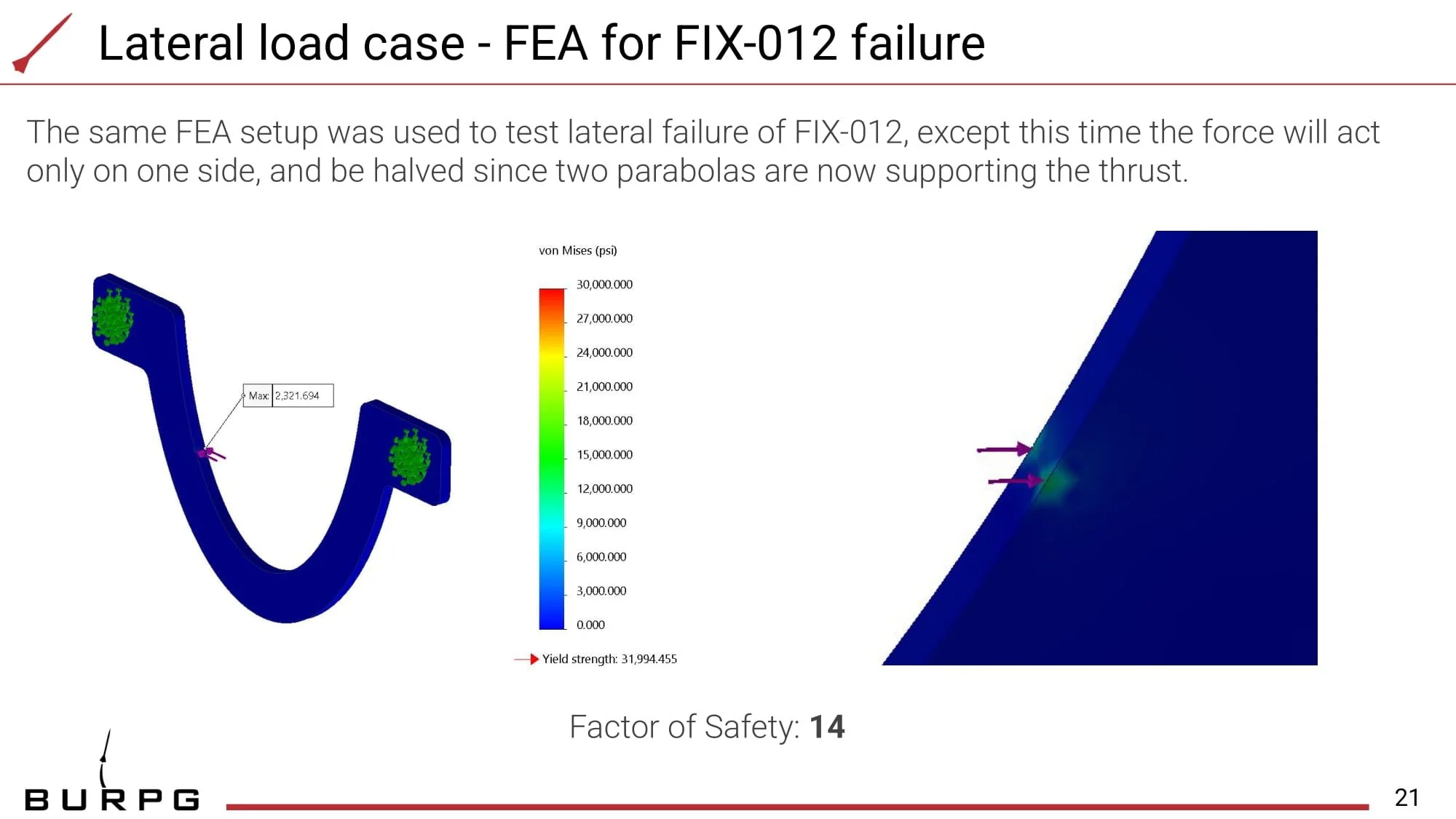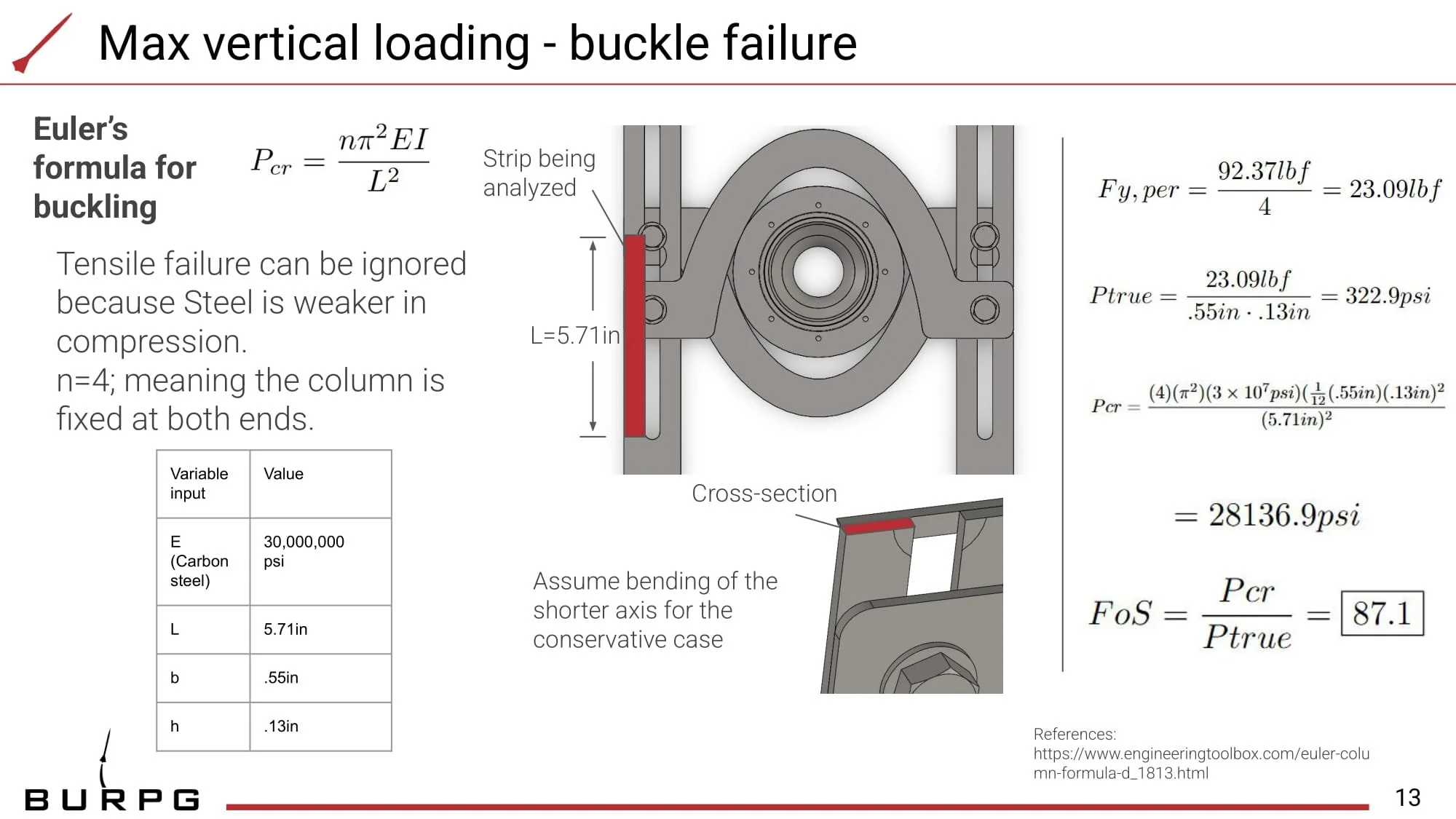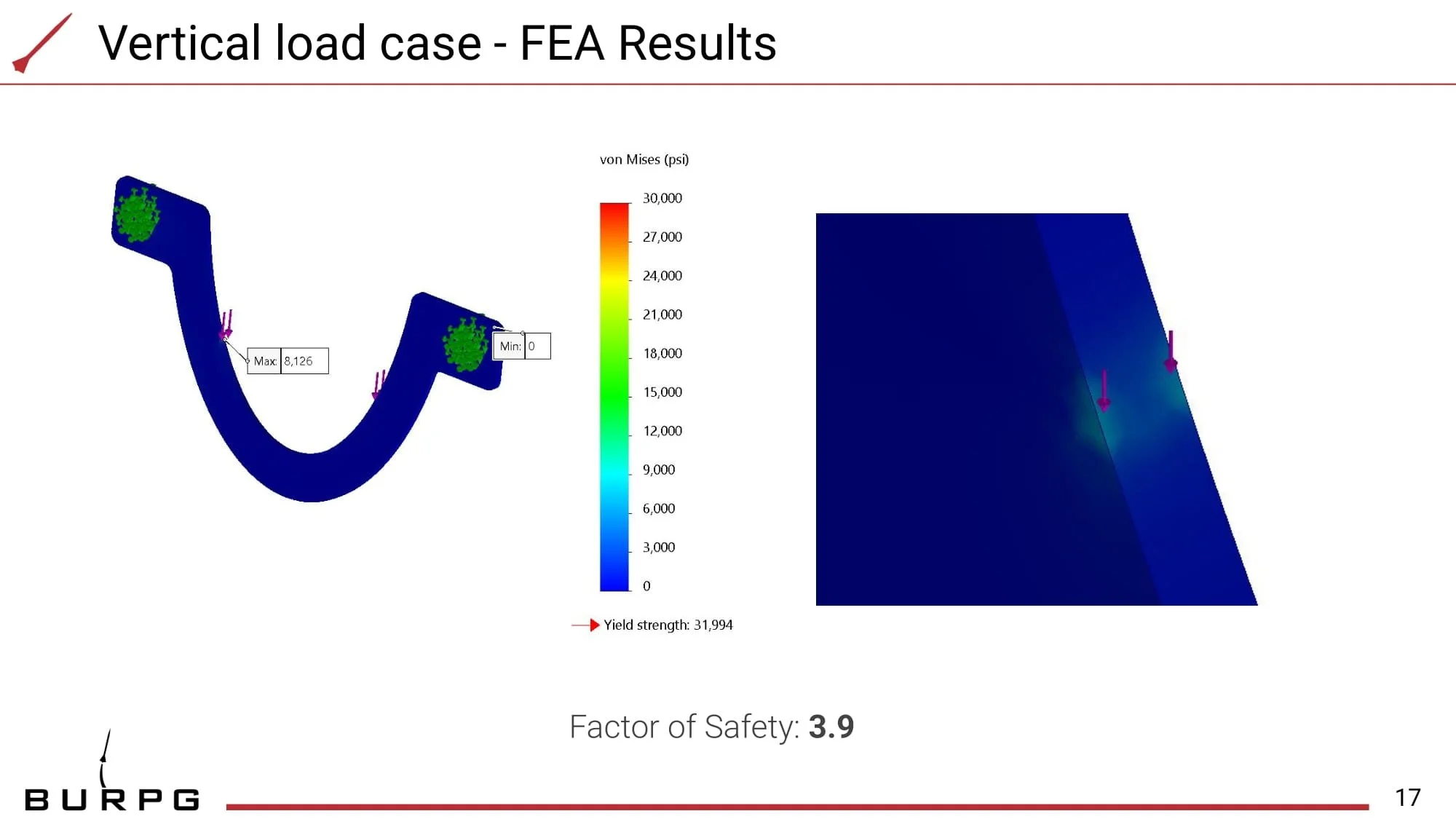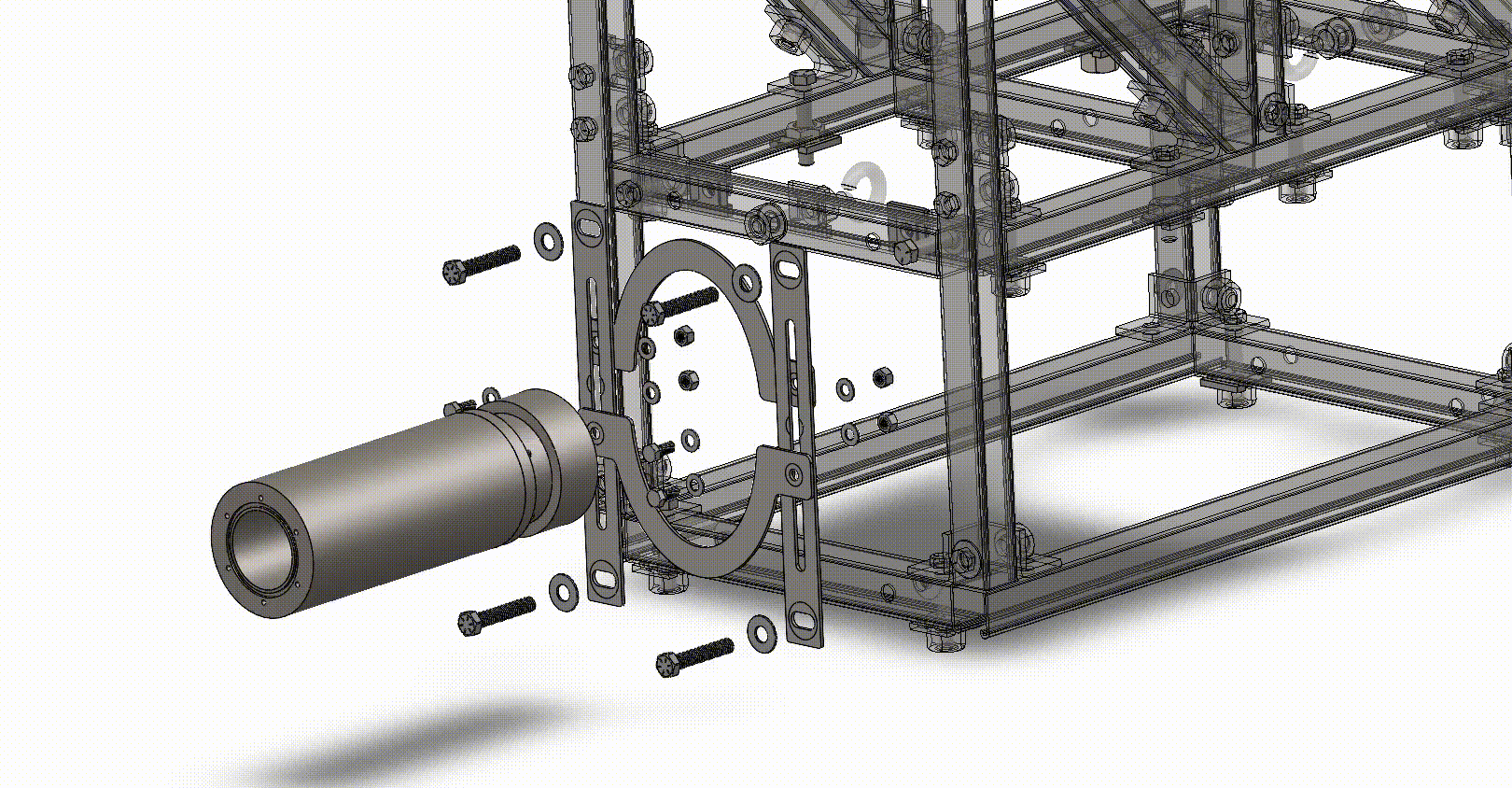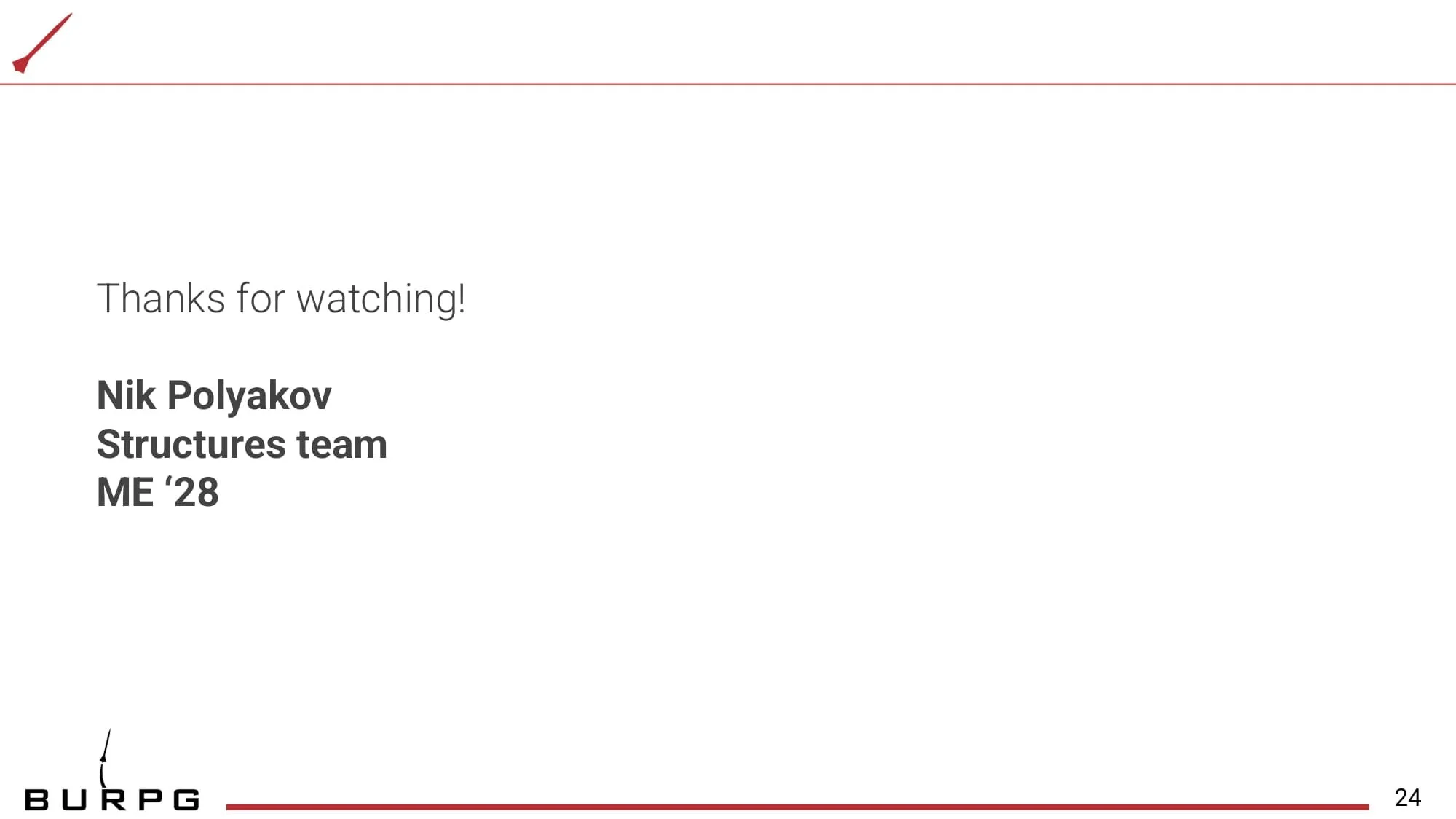Variable engine gaseous test stand
VEGAS
Boston University Rocket Propulsion Group
-
Design modular frame: Create a versatile frame that allows easy interchangeability of components for different engine types.
Modular mounts: Design adjustable engine, fuel tank, and propulsion mounts for quick engine swaps and adaptability.
Load cell integration: Incorporate high-precision load cells for accurate thrust measurement, with multi-axis support for vertical and horizontal force.
-
Structures Engineer
-
Onboarding – Hybrid Rocket Engine Development (Sep 2024 – Dec 2024)
Structures Engineer – VEGAS (Feb 2024 – Present)
-
Solidworks
Structural Finite Element Analysis (FEA)
Milling
Mechanical Design & Analysis
Machine Design
-
Designed and built a modular nozzle fixture integrating with existing fluid and fire-extinguishing systems.
Eliminated torque on the thrust-measuring load cell, ensuring accurate force readings and analysis for new engine systems.
Contributed to next-generation liquid propulsion development, supporting RPG’s efforts to become the first university team to launch a liquid-fuel rocket into space.
Horizontal Test Stand (HTS), large- scale predecessesor of VEGAS.

